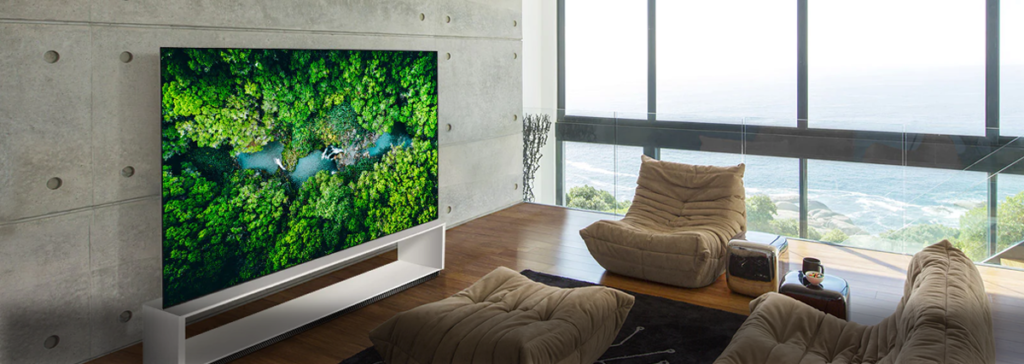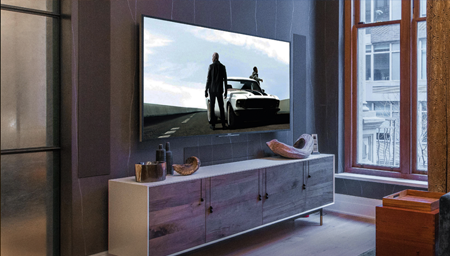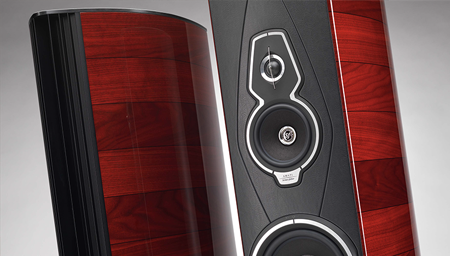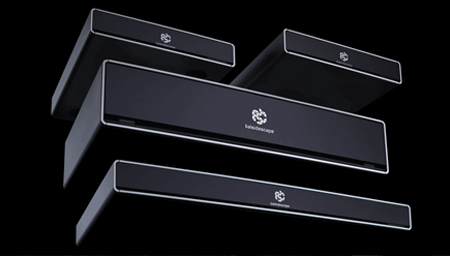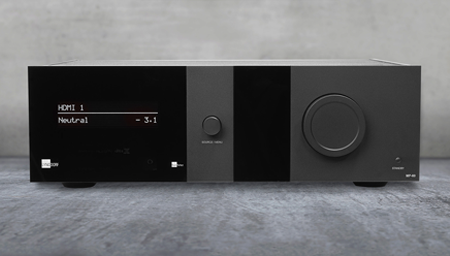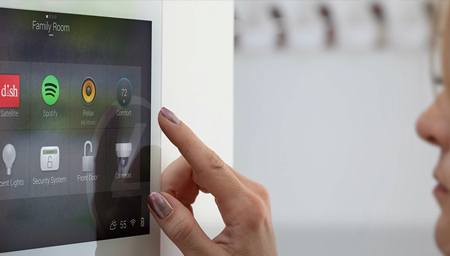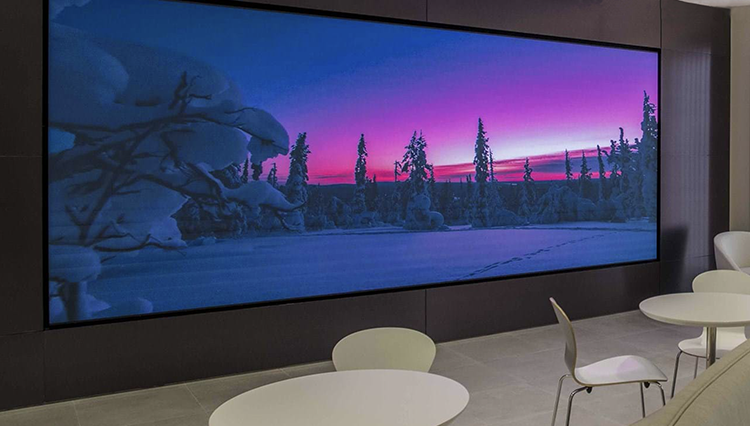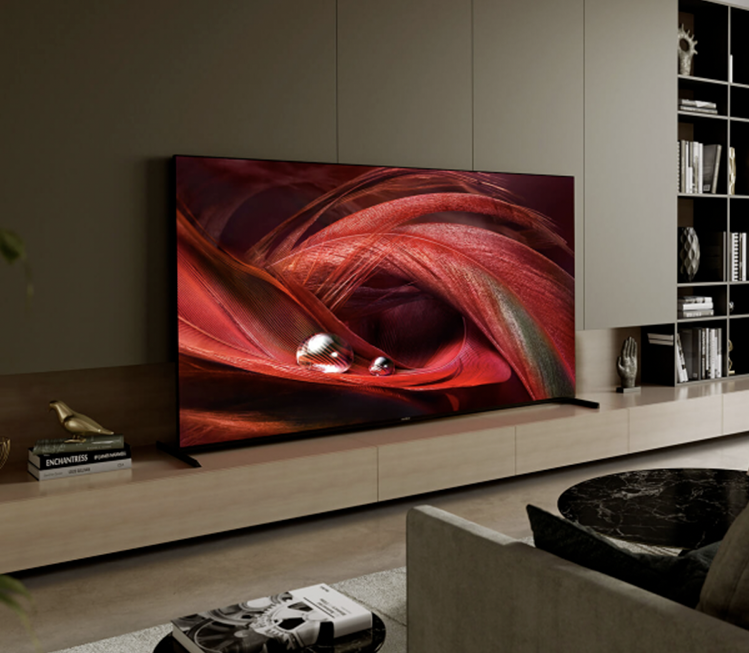click the image to enlarge
a Planar video wall shown in a commercial setting
There have never been so many options for premium displays, but choosing the right one doesn’t need to be daunting
by Dennis Burger
updated December 6, 2021
In our first Basics article—”What is a Luxury Entertainment System?“—we provided a 30,000-foot view of the primary components that go into building a modern AV system. The goal was not to overwhelm you with technical specs or particulars but to give you a general understanding of what bits you need when having a luxury system specced and installed. As promised, though, we’ll now start digging into the specifics of each type of gear, for those who want a deeper understanding of the technology and a better sense of what makes a component suitable for a luxury environment and a world-class home entertainment experience.
First up: Video displays. As mentioned in the overview, you should first decide what type of screen you want or need for your room. Your main two choices are between a TV or a projection system with separate projector and screen (but there is a third option emerging, which I’ll touch on in a bit.)
If you’re building a dedicated home theater, or if for whatever reason you simply want or need a screen larger than 100 inches, a projection system may be your best bet. If you’re building a media room or multi-use space, though, don’t let anyone talk you out of a high-performance TV. Today’s best Ultra HD (4K), HDR-capable displays deliver a level of visual excellence that’s hard to match with any level of projector/screen combo. You’ll get deeper and truer blacks, more spectacular highlights, richer and more lifelike color—and TVs generate much less heat and noise.
“What about the sense of scale, though? The wow factor? That wall-filling spectacle of it all?,” I hear you asking. All of that is really determined not purely by screen size but by the relationship between the size of the screen and the distance to your seat. Park yourself six and a half feet away from a 75-inch TV, and you’ll enjoy the same IMAX-like viewing experience as if you sat ten and a half feet from a 120-inch screen. Depending on the size of your room, that may also leave enough space behind you for a more immersive surround sound experience.
If you’ve paid any attention to the TV market of late, you’ve noticed that there are hordes of high-performance, 75-inch and larger UHD TVs ripe for the picking. But would they all be at home in a luxury entertainment space? No. What sets luxury TVs apart isn’t merely their specifications but rather their industrial design.
That’s why something like Sony’s XR-75X95J (shown at right) is the starting point for luxury. Not only does this TV offer excellent performance but perhaps more importantly, it sports a simple yet stylish design you won’t be embarrassed to hang on your wall or place on a credenza. It also features niceties more economical TVs lack, like integrated cable management, so you can keep your installation neat and tidy.
Step up to something like Sony’s Master Series displays and you do get a bit of a performance boost (including 8K resolution at the very top of the line). But just as important, you get sleeker, more innovative designs, ensuring your TV will look just as good when it’s off as it does when it’s on.
If these models are still a little too “TV-like” for your tastes, LG makes a pair of OLED displays that break traditional design molds. The OLED88ZXPUA (shown at the top of the page) eschews the standard pedestal for a built-in open shelf that creates the illusion the TV is floating in mid-air. The brand-new Signature OLED R, meanwhile, turns the screen itself into a rollable element that retracts into an elegant speaker console when not in use. The screen can also peek out of its hidden home to give you a quick look at the weather, the time, or the particulars of the music you’re currently listening to.
Of course, we can’t talk about innovative TVs that break all design molds without mentioning Bang & Olufsen. You may remember B&O from its iconic BeoSound 9000, a radical wall-mounted CD player that practically defined Danish style in the mid 90s, or perhaps you have a B&O sound system in your BMW or Audi. But the company also makes some of the most gorgeous displays we’ve ever seen. The Beovision Eclipse is a high-performance 4K HDR OLED TV with a built-in 450-watt sound system and an incredibly versatile motorized mounting system. The 77-inch Beovision Harmony, meanwhile, takes things even further with a stunning three-channel speaker system that unfolds from the front of the display like a piece of kinetic origami.
The bottom line is that any display you add to your entertainment environment should enhance, not detract from, the décor. And there are plenty of options that do exactly that. But as mentioned above, there’s another display option that is neither TV nor projector.
Video walls are starting to make their presence known in luxury AV installations in a big (huge!) way. Granted, in the past, such walls were constructed by butting smaller displays up next to each other and splitting an image across them. Today, though, MicroLED technology from companies like Planar, Samsung, LG, and Sony allows installers to build larger and larger screens out of modular components that can fill a wall from top to bottom with seamless 4K or 8K imagery. No lines. No stripes. Just vibrant imagery with no boundaries.
For now, this technology is mostly aimed at commercial applications. But Planar and Samsung have already had great success in the luxury home market, and as companies like Sony and LG bring their own MicroLED modules to the consumer market, you can expect to see them become more common in the homes—but only the most high-end homes for the foreseeable future.
Dennis Burger is an avid Star Wars scholar, Tolkien fanatic, and Corvette enthusiast who somehow also manages to find time for technological passions including high-end audio, home automation, and video gaming. He lives in the armpit of Alabama with his wife Bethany and their four-legged child Bruno, a 75-pound American Staffordshire Terrier who thinks he’s a Pomeranian.
click the image to enlarge
Sony’s XR-75X95J
Sign up for our monthly newsletter
to stay up to date on Cineluxe
© 2023 Cineluxe LLC


